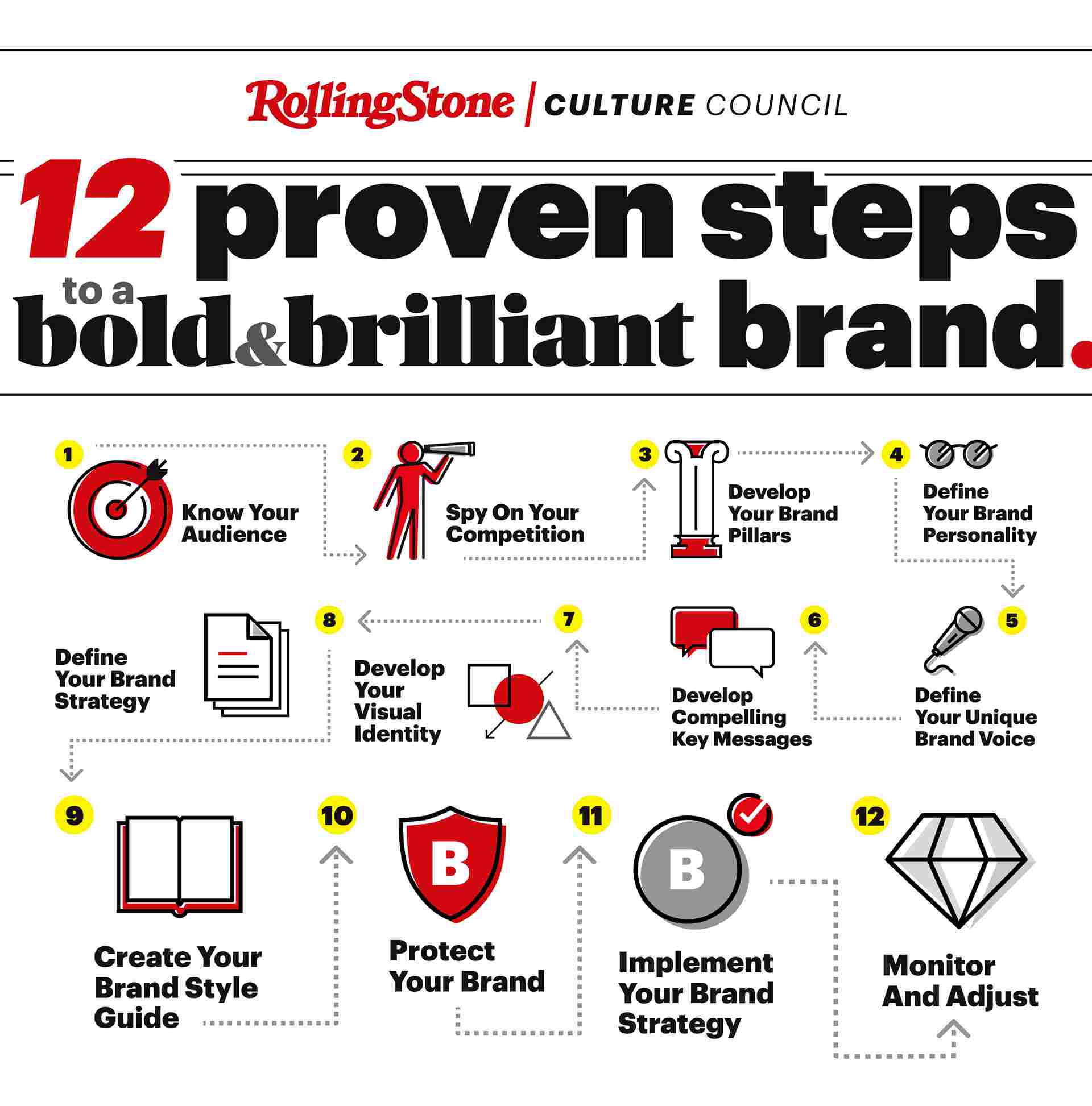
You’ve certainly heard this before: “A brand is much more than a logo or colors or a slogan.” But many organizations don’t know how to do more than create those visuals; they don’t know how to create a bold and brilliant brand with an effective, proven brand strategy.
Your brand messaging is the promise you make to your customers about the experience they can expect from your products or services. It’s important to be explicit about who you are, what you stand for, and how you can help your perfect client or customer. It’s the best way to increase brand awareness in your market.
Your most successful brand strategy helps you create long term goals that guide your efforts to build a recognizable and differentiated brand, so it is attractive to just the right people in your market. Through the strength of creative leadership, you can help make your brand memorable by making it bold and brilliant.
Here are 12 steps to effective branding for creative businesses you can begin to take today to help you create that bold and brilliant brand.
1. Know your audience
Before you can begin to develop your brand strategy, you need to be intimately acquainted with your target audience. You should know them so well, they would feel embarrassingly vulnerable if they were to meet you in person.
Do your market research to answer questions like these: Not just who are they (though that is important), but who do they think they are? Who do they aspire to be and why? What do they care about? What motivates them? What do they need/want from your products or services? What keeps them awake at night? How can you help them solve their pressing problem (as it relates to your organization)?
2. Spy on your competition
Once you know who your target audience is, you need to understand how other brands are already winning their attention. Increase your market share by improving your brand positioning. You will want to be able to answer questions like these: Who are your direct competitors? Who are your indirect competitors? What do they stand for? How are they positioning themselves in the marketplace? What do they not do for your audience that their customers wished that they would do? How can you do the same thing, but 10x better?
3. Develop your brand pillars
Your brand pillars are the foundation of your strong brand strategy. They include your mission, vision, values, and unique value proposition. These elements should be based on a deep understanding of your target audience and problem solving for what they need and are looking for.
Don’t rush through this process of self-examination. If these documents are to be useful, they must feel authentic to you, and to everyone on your team.
4. Define your brand personality
Your brand personality is how you want your brand to be perceived by your target audience. Imagine your brand as a real person. Would that person be funky or professional? Impulsive or careful? Energetic or calm? Funny or serious? Identify the adjectives that describe the person your perfect customer or client would meet if they had the opportunity.
5. Define your unique brand voice
Your brand voice is how you communicate your message to your target audience. It should be consistent across all channels, and it should be something that sets you apart from your competition by creating a unique brand identity. Use what you now know about your target audience, and what you have developed for your brand personality and unique value proposition.

6. Develop compelling and intriguing key messages
Your key messages are the core of your communications and drive your marketing strategy. Based on your brand pillars, they should be clear, concise, and easy to understand.
Your messaging is how you express and communicate your brand personality and your unique value proposition. It is how you invite your target audience either to learn more, or to commit and make a purchasing decision.
Your core slogan and all your ad copy are part of your compelling and intriguing messaging; they encapsulate your brand promise. Relevant, intriguing messaging is how you get – and retain – the attention of just the right potential customers.
7. Create a visual identity
Your visual identity is what most people think of when they hear the word “brand”. As you can see by now, however, you aren’t ready to create that visual identity until you’ve first taken all the other steps above!
Your visual brand identity is also an important part of how you communicate your brand to your target audience. It includes your logo, color palette, typography, and other design elements. Like other pieces of your brand strategy, it should be based on your brand pillars and your brand voice and should be consistent across all of your marketing materials.
8. Create a brand strategy document
Your brand strategy document is the roadmap for all your brand marketing efforts. It includes critical details about your target audience, your key messages, your visual identity, and your brand voice. This is the document you share with team members, new hires, contractors, and others who work with your team, so everyone is on the same page.
9. Create a brand style guide
A brand style guide outlines how to use your visual identity elements and reminds everyone on your team how important it is to be consistent across all channels. Every touchpoint your target audience has with your brand needs to be in alignment with your brand strategy; your style guide helps you maintain that integrity.
| Join Rolling Stone Culture Council to connect with change-makers and disruptive leaders like you. Click here to see if you qualify. |
10. Protect your brand
Your brand is one of your most valuable assets. Make sure you are protecting it with trademark registration and social media monitoring.
11. Implement your brand strategy
Now that you have a solid, intriguing brand strategy in place, it’s time to start implementing it across all your channels. This includes your website, social media, content marketing materials, and more. Incorporate your brand into every likely engagement you have with a prospective client or customer.
Your team is one of your most important brand ambassadors. Make sure they are on board with your brand strategy, and they know how to implement it consistently, and train every person on the importance of delivering on your brand promise.
12. Monitor and adjust your brand strategy
As you implement your brand strategy, you need to keep a close eye on how it’s performing. Are you reaching your target audience? Are they engaging with your brand? What adjustments do you need to make?
Your brand should always be evolving, just like your business. As you grow and change, so should your brand. Collect feedback from customers and employees to gauge how well you are living up to your brand promise. Correct your course where necessary to ensure that your brand promise is being delivered.
========
Branding for creative businesses means developing a bold and brilliant brand, and delivering that brand through an intriguing, comprehensive brand strategy. Although it may be a lot of work, it’s also a lot of fun to see it all come together.
By taking the time to create a well-thought-out brand strategy, your branding will be effective and cohesive, and help you stand out from the crowd.
